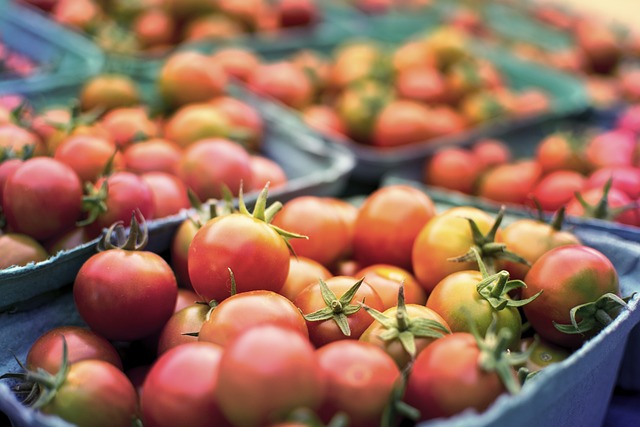In an era of growing environmental awareness, sustainability has become a key consideration in many aspects of daily life—including how we eat. A sustainable meal plan not only prioritizes your health but also minimizes the environmental impact of your food choices. It’s about making thoughtful decisions that benefit both you and the planet without compromising taste or convenience. Whether you’re new to sustainable eating or looking to refine your approach, this guide will walk you through the steps to create a meal plan that aligns with your values and goals.
What Is a Sustainable Meal Plan?
A sustainable meal plan is one that considers the environmental, social, and economic impacts of food production and consumption. It emphasizes:
- Reducing food waste.
- Choosing locally sourced, seasonal, and organic ingredients.
- Prioritizing plant-based foods over animal products.
- Supporting ethical farming practices.
- Minimizing packaging and single-use plastics.
By adopting these principles, you contribute to a healthier planet while enjoying nutritious, delicious meals.
Step 1: Assess Your Nutritional Needs
Before diving into meal planning, it’s important to understand your nutritional requirements. Consider factors such as:
- Age, gender, and activity level.
- Dietary preferences (e.g., vegetarian, vegan, omnivore).
- Any allergies, intolerances, or health conditions.
- Caloric needs based on your lifestyle.
This assessment ensures your meal plan is balanced and meets your individual needs while incorporating sustainable practices.
Step 2: Embrace Plant-Based Eating
Plant-based diets are widely regarded as more sustainable than diets high in animal products. Meat and dairy production contribute significantly to greenhouse gas emissions, deforestation, and water usage. Here’s how to incorporate more plants into your meals:
1. Prioritize Whole Foods
Focus on whole grains, legumes, nuts, seeds, fruits, and vegetables. These foods are nutrient-dense, environmentally friendly, and often affordable.
2. Experiment with Meat Alternatives
If you’re not ready to go fully plant-based, try reducing meat consumption by incorporating alternatives like tofu, tempeh, lentils, chickpeas, or plant-based burgers.
3. Adopt “Meatless Mondays”
Dedicate one or more days each week to entirely plant-based meals. This small change can have a significant positive impact over time.
Step 3: Choose Seasonal and Local Ingredients
Seasonal and locally grown produce is fresher, tastier, and better for the environment. Here’s why:
- Lower Carbon Footprint: Locally sourced food doesn’t travel long distances, reducing transportation-related emissions.
- Support for Local Farmers: Buying from nearby farms strengthens the local economy and promotes sustainable agricultural practices.
- Better Flavor and Nutrition: Seasonal produce is harvested at peak ripeness, ensuring higher nutrient content and superior taste.
To implement this step:
- Visit farmers’ markets or join a Community Supported Agriculture (CSA) program.
- Learn what’s in season in your region and plan meals accordingly.
- Preserve excess seasonal produce through freezing, canning, or pickling for off-season use.
Step 4: Reduce Food Waste
Food waste is a major contributor to environmental degradation, accounting for roughly 8% of global greenhouse gas emissions. Here’s how to minimize waste in your meal planning:
1. Plan Ahead
Create a detailed shopping list based on your meal plan to avoid buying unnecessary items. Stick to the list when grocery shopping.
2. Use Leftovers Creatively
Repurpose leftovers into new dishes. For example, roasted vegetables can become part of a grain bowl or be blended into a soup.
3. Store Food Properly
Learn proper storage techniques to extend the shelf life of perishable items. For instance, herbs stay fresh longer when stored in water, and root vegetables thrive in cool, dark spaces.
4. Compost Scraps
Turn food scraps like vegetable peels, coffee grounds, and eggshells into compost to enrich your garden soil instead of sending them to the landfill.
Step 5: Opt for Ethical and Sustainable Proteins
If you consume animal products, choose sustainably sourced options:
- Grass-Fed and Pasture-Raised Meats: These animals are raised in humane conditions and contribute to healthier ecosystems.
- Wild-Caught or Responsibly Farmed Fish: Look for certifications like the Marine Stewardship Council (MSC) label.
- Organic Dairy and Eggs: Organic farming avoids synthetic pesticides and antibiotics, benefiting soil and water quality.
Reducing overall protein portions and filling plates with more plant-based sides is another effective strategy.
Step 6: Limit Processed and Packaged Foods
Processed foods often come with excessive packaging, which contributes to plastic pollution. They’re also typically less nutritious than whole foods. To make your meal plan more sustainable:
- Cook from scratch whenever possible.
- Buy staples like rice, beans, and nuts in bulk using reusable containers.
- Avoid single-use plastics by bringing your own bags, jars, and containers to stores.
Step 7: Stay Flexible and Realistic
Creating a sustainable meal plan doesn’t mean perfection—it’s about progress. Life gets busy, and unexpected challenges arise. Here’s how to stay flexible:
- Allow room for spontaneous meals or dining out without guilt.
- Keep pantry staples like canned beans, frozen vegetables, and whole grains on hand for quick, low-waste meals.
- Celebrate small victories, like swapping one unsustainable habit for a greener alternative.
Sample Sustainable Meal Plan
Here’s an example of a one-day sustainable meal plan:
Breakfast:
- Overnight oats made with rolled oats, almond milk, seasonal berries, chia seeds, and a drizzle of honey.
Lunch:
- Quinoa salad with roasted seasonal vegetables (e.g., zucchini, bell peppers), chickpeas, and a lemon-tahini dressing.
Snack:
- Apple slices with almond butter or a handful of mixed nuts.
Dinner:
- Stir-fried tofu with broccoli, carrots, and snap peas served over brown rice. Garnish with sesame seeds and soy sauce.
Dessert:
- Dark chocolate squares paired with a few dried figs or dates.
Benefits of a Sustainable Meal Plan
Adopting a sustainable meal plan offers numerous advantages:
- Environmental Impact: Reduces carbon emissions, conserves water, and protects biodiversity.
- Health Benefits: Encourages a diet rich in whole, unprocessed foods that support long-term well-being.
- Cost Savings: Reducing food waste and buying in bulk can lower grocery bills.
- Community Connection: Supports local farmers and fosters a sense of community.
